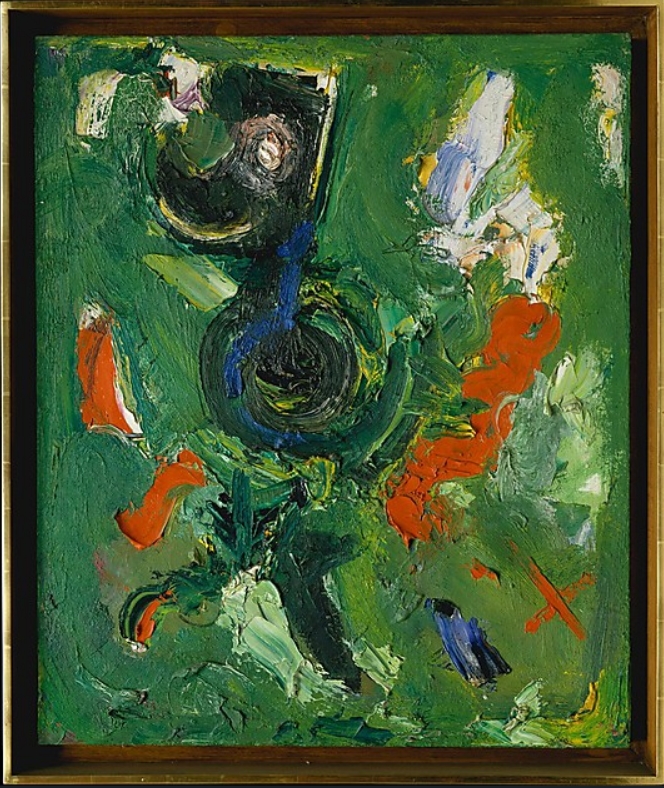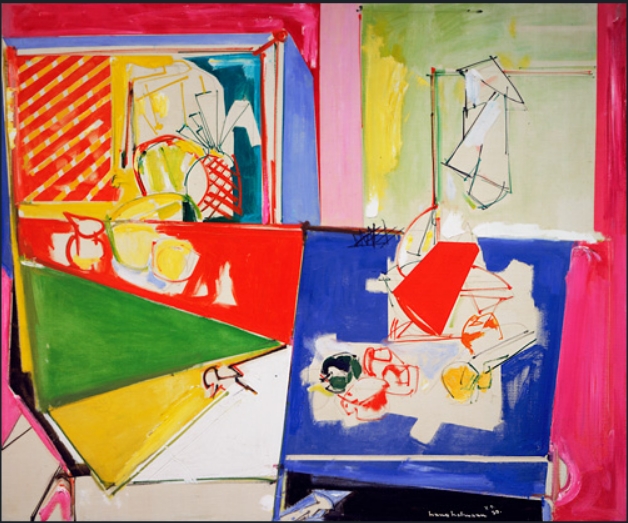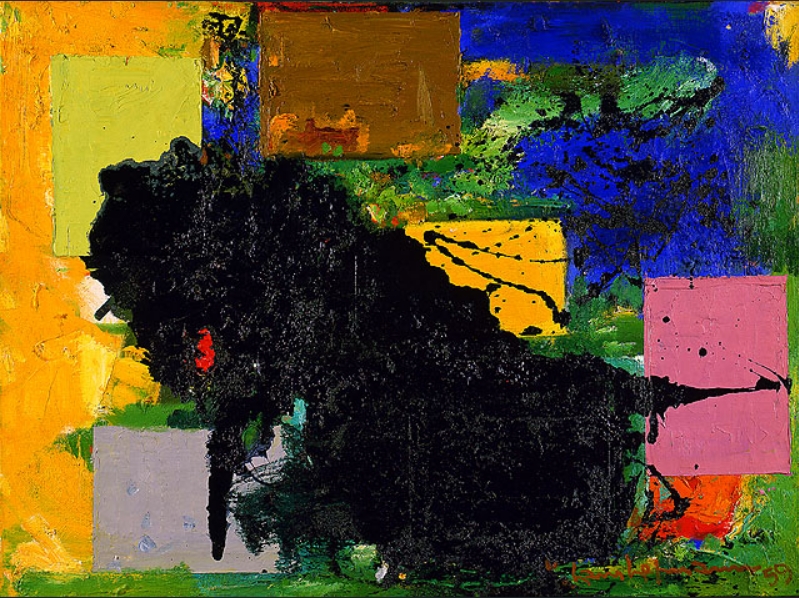Hans Hofmann was a well-known abstract expressionist painter and art educator of German-American descent. Hofmann, born in Germany on March 21, 1880, was renowned for his dynamic compositions and vivid use of colour. In the years following World War II in America, abstract expressionism arose as a movement in which he was heavily involved. After completing his training as a scientist and mathematician, Hofmann turned his attention to painting. Before coming to America in 1932, he studied art in Munich and Paris. He became well-known in America for both his teaching and his artwork.
Hofmann had a significant impact during his teaching career. The Hans Hofmann School of Fine Arts was founded by him in 1933 in New York City, and it eventually moved to Provincetown, Massachusetts. His instructional strategies strongly emphasised the value of composition, colour, and form. He also pushed his students to experiment with abstract ideas and expressiveness. As an artist, Hofmann’s approach changed with time, although he never wavered from abstraction. His works frequently have vigorous brushstrokes, rich hues, and dynamic shapes that give the canvas a sense of movement and vitality.
Hofmann had a significant influence on the art world. Through his teaching and artistic work, he impacted numerous generations of artists. Being one of the key figures in abstract expressionism, he passed away in 1966 and left a lasting impact.
Art of Hans Hofmann
Known for his contributions to abstract expressionism and his influence as a teacher, Hans Hofmann was a crucial figure in 20th-century painting. Hofmann greatly influenced the post-World War II movement known as abstract expressionism. His paintings frequently had vibrant colours, angular brushstrokes, and abstract shapes that embodied the movement’s emphasis on artistic independence.
Hofmann investigated the expressive possibilities of colour as an artist and educator. He gained a profound comprehension of colour theory, focusing on how colours combine and affect people psychologically. His colour theory lectures had a significant impact on artists of later generations. Hofmann developed a unique aesthetic philosophy focused on formal structure and intuition’s role in the creative process. He held that spontaneity and control have a dynamic interaction and encouraged his students to embrace strict discipline and freedom of expression.

Hofmann had a profound influence on students. He established his art schools in Munich and New York City, where he served as a mentor to many budding painters. His approach to education strongly emphasised taking chances, experimenting, and developing unique artistic voices. His pupils, such as Lee Krasner, Joan Mitchell, and Helen Frankenthaler, became well-known in art. Hofmann helped close the gap between American abstraction and European modernism throughout his career. He was born in Germany and spent his early years training and working in Europe before moving to the US in the 1930s. His experiences on both continents shaped his creative growth and made him a valuable link for ideas to flow between the two areas.
The artwork of Hans Hofmann is a controlled explosion. The energy of his brush breaks the conventional boundaries of style. It establishes its dynamic order, regardless of whether he works directly with nature, the rational structure of cubism, or the more approachable forms of contemporary abstraction. Man’s dynamism and his artistic expression are inseparable. Even the words in his titles—Ecstasy, Burst into Life, and Ascop—explode or defy dictionary definitions.
Many of his students have found that Hofmann’s work is unique, but he is also a fantastic teacher to those who are inspired by his zeal but have the fortitude to follow their path. As an instructor and a creator, he has been a formidable and freeing force in the art of the twentieth century—freeing because the iron self-discipline that underpins his work alone justifies the extravagantness of his experiments, and dangerous because his illusion of unleashed force has occasionally been misinterpreted as a creed of emotional latitude.
Among the few colourists created in Germany is Hofmann. The light and fire in his paintings are explosive, like brilliant explosions. It’s a well-established truth that the canvases appear brand-new in the world, having just been created. Hofmann’s art should be considered because it has evolved dramatically since its inception. A paradox: in this instance, colour appears to exist for its own sake, if colour existed at all, but in actuality, colour exists for form.
‘Hofmann’s painting has a rational history. It is a French-disciplined painting which, as it has come to reveal itself, is entirely un-French. Yet it is undoubtedly a latter-day development, a culmination, of Fauve painting and a reasoned development out of cubist painting—Fauve primarily, put to a new and more extensive use. The time lag is no more significant than the change in aspect, as of Romanesque art going over into Gothic, or high Renaissance into baroque, writes Frederic Wight.
According to Frederic Wight, ‘Hofmann is an intensely active man: teacher and painter the year round. He conducts his long-established school on Eighth Street in Greenwich Village, has his studio around the corner, and lives within walking distance on West Fourteenth Street. His studio is a workroom and storeroom, on fire with paint. His apartment is illuminated with splendid canvases—those he understandably wishes to keep close—although none is safe in its present state while it remains under his eye. Each may still transform.

Hofmann exists for two reasons: to paint and to explain. That explanation occupied the first half of his life, and his fundamental art came last, which is consequently curious. It wasn’t until he immigrated to America that his potential was apparent. Most of the early evidence has been lost: he never saw his first piece of art again after leaving it in Paris in 1914, and the paintings he left behind in Germany after the war have not survived.
Relatively fresh and, one could argue, youthful, Hofmann is liberated from the picture (though he will fight the image in and out of his painting, saying, “I have never given up the object”). The Hofmann in front of us is focused on striking a better deal with life; he enthusiastically gestures to Titian, who painted till the age of 99.
According to Frederic Wight, ‘There is a parallel between Kandinsky’s departure from naturalism twenty-five years earlier and a certain resemblance to the final result when freedom has been won. However, the resemblance to Kandinsky needs to be closer to embarrassment. Kandinsky and Miro have a wide channel through which many painters besides Hofmann can pass. The basic postcubist Hofmann is a master of rugged geometry, the paint sculptured into great glowing blocks—in such a painting as SCOTCH AND BURGUNDY, for example. There is also a symbolist Hofmann of ferocious images, of gargoyles or harpies— such as the IDOLATRESS (1944). The Hofmann of 1947, who painted the rare transitional canvas, PALIMPSEST, is a master of whimsical images snared with a light line’.
“A picture must be made, dictated, through the inherent laws of the surface. I invented ‘push and pull,’ force and counter-force. I have been very modest about it, but they are significant discoveries. The highest three-dimensionality is two-dimensionality, which no layperson can ever understand. Depth is nothing less than the suggested volume. Students come to me painting in two-dimensional rhythms, an empty affair, writes Frederic Wight.
Philosophy, education, and modern art are all impacted by the legacy of Hans Hofmann. His dynamic canvases invite viewers into a world of dynamic forms and colours, pulsating with vitality, making him a pioneering figure in abstract expressionism. However, even more than his creative accomplishments, Hofmann may have made the most significant impact as a teacher, influencing the ideas and approaches of innumerable artists who came after him.
His teachings guided generations of artists towards new artistic expression frontiers and strongly emphasised the value of spontaneity, intuition, and the harmonic interaction of form and colour. Hans Hofmann never stops challenging and inspiring artists and art lovers with his daring experimentation and unrelenting dedication to artistic innovation. He is a constant reminder of the endless possibilities of pursuing a creative vision.
Pointillism and Its Legacy: Artists, Definition, and the Influence of Colour in Art





